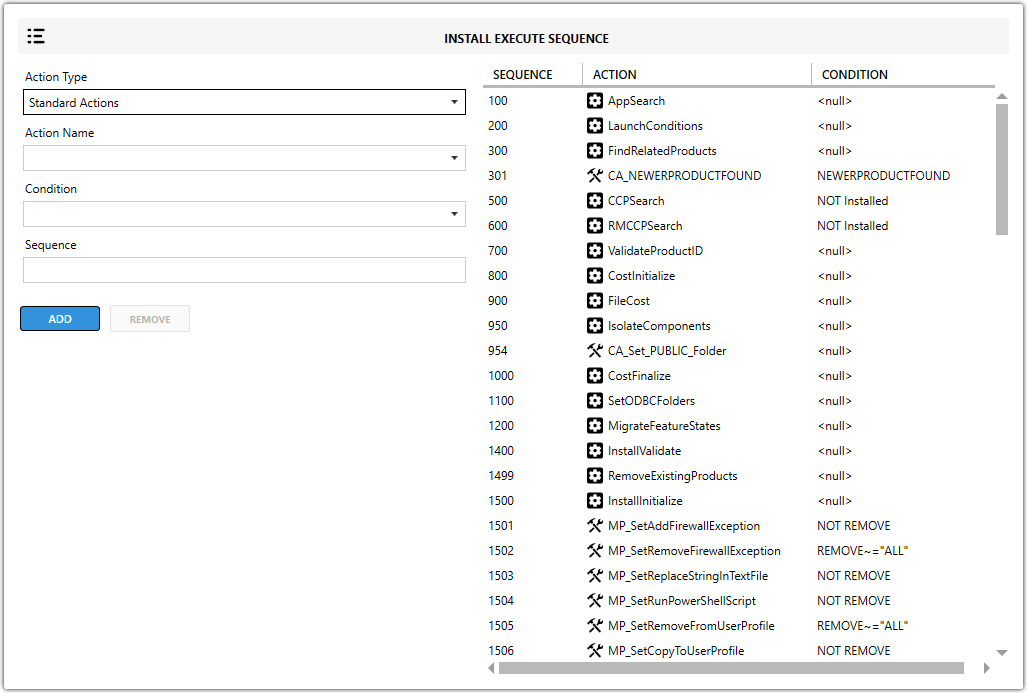Install Execute Sequence
The Install Execute Sequence view shows all actions that will be executed during an MSI installation, uninstallation, or repair, and the exact order in which they run.
This view represents the internal MSI table called InstallExecuteSequence, which controls how the installer performs changes on the system. It includes both standard actions (defined by Windows Installer) and any custom actions you create.
Custom actions can be inserted anywhere in the sequence. It’s important to choose the correct placement so they do not interfere with standard MSI operations.
Note: The Install Execute Sequence runs during the deferred phase of installation, which is when actual system changes (like file copies, registry changes) occur. User interface actions happen separately in other sequences.
Action Type
Defines whether the action is a standard or a custom action.
Action Name
Specifies the name of the action to be executed.
Condition
Sets rules that determine when the action runs (optional):
-
During installation – Runs only during installation.
-
During uninstallation – Runs only during uninstallation.
-
During repair – Runs only when repairing the installation.
-
x64 OS – Runs only on 64-bit Windows systems.
-
x86 OS – Runs only on 32-bit Windows systems.
-
Windows 10 – Runs only on Windows 10.
-
Windows 11 – Runs only on Windows 11.
Sequence
Defines the order in which the action executes. Lower sequence numbers run earlier, higher numbers run later. Typically:
- Numbers below 5000 - reserved for standard actions
- Numbers above 5000 - used for custom actions to avoid conflicts
💡 Always check where your custom action fits in the sequence to ensure it executes at the right time without interfering with MSI standard actions.

